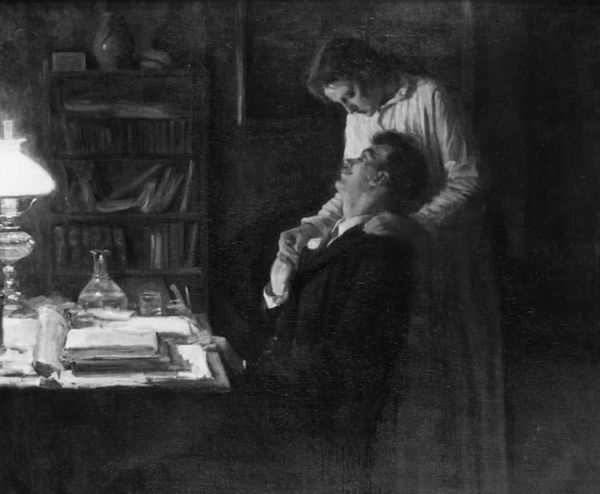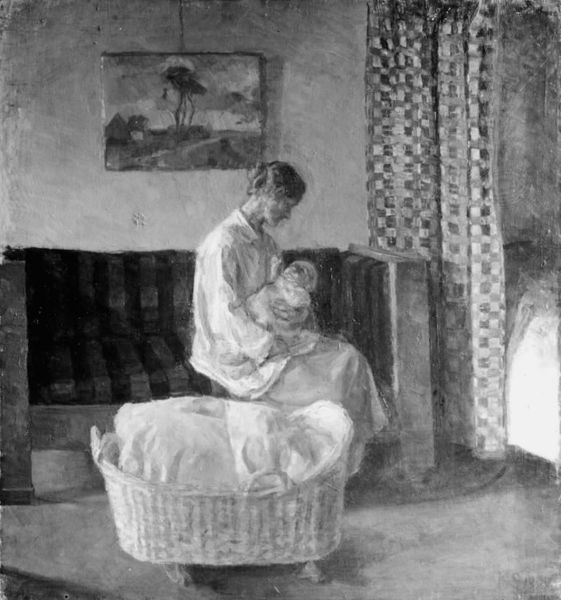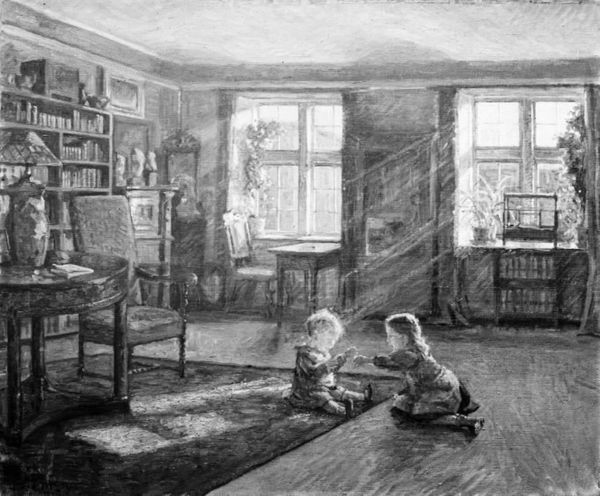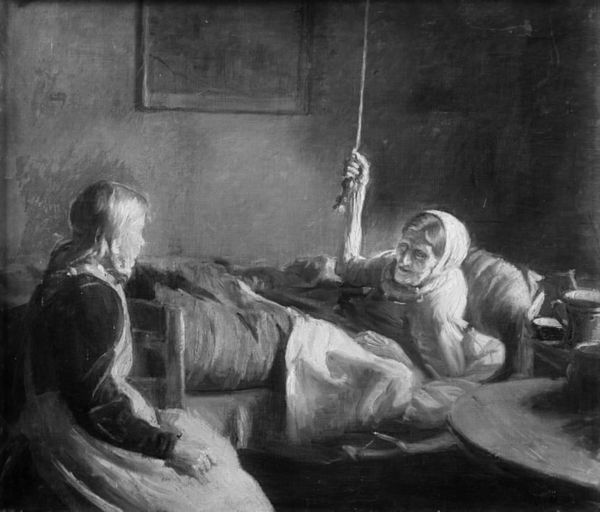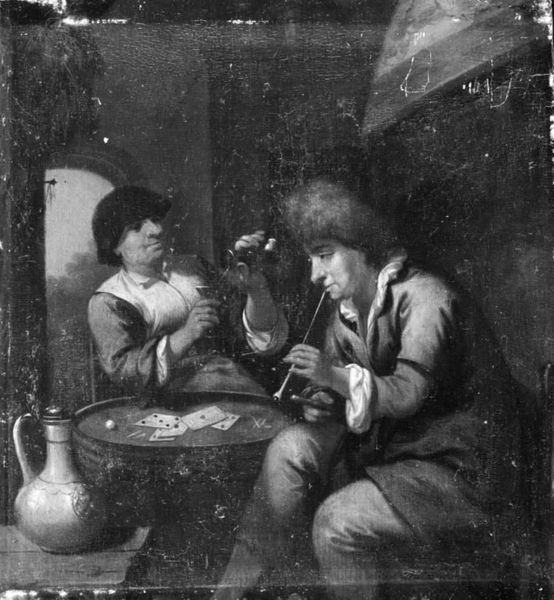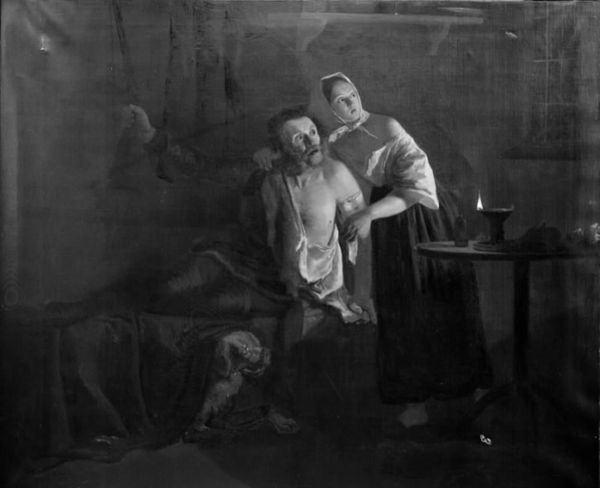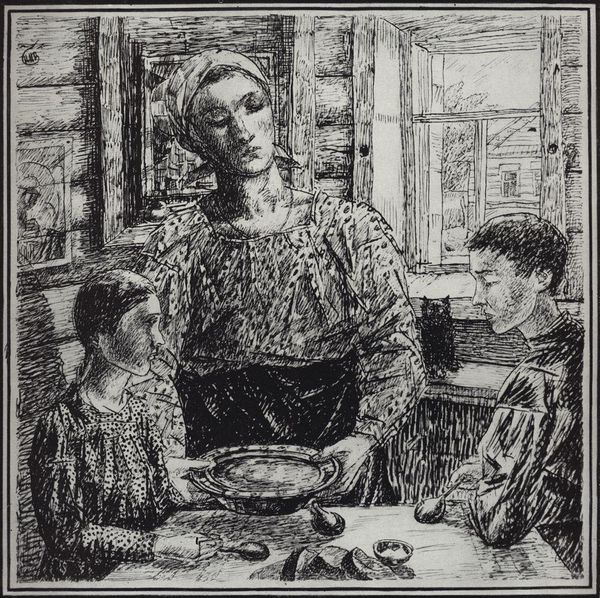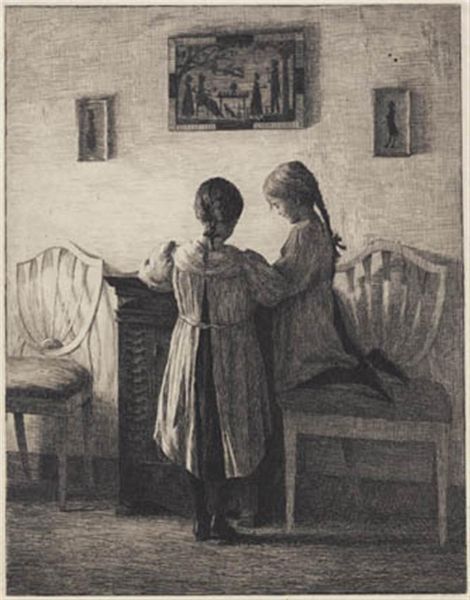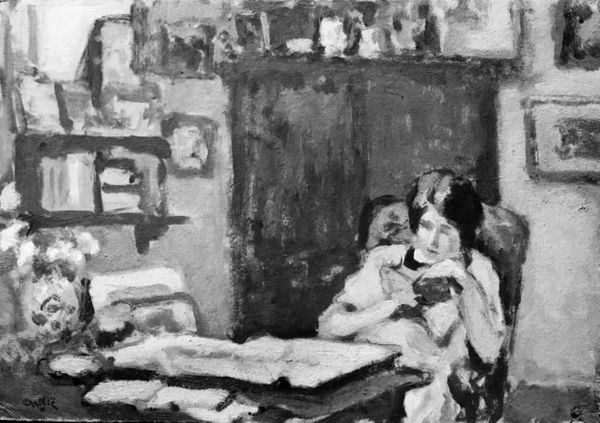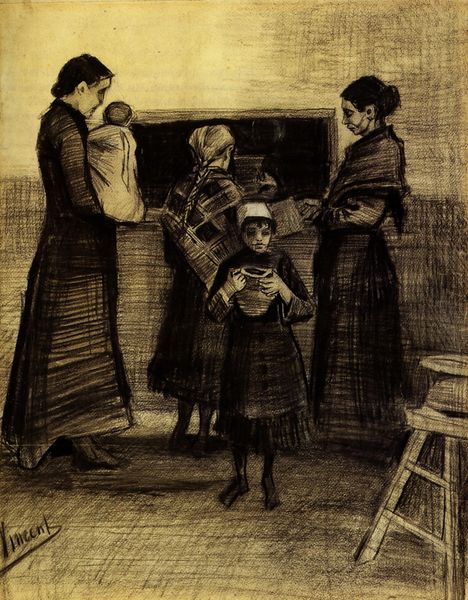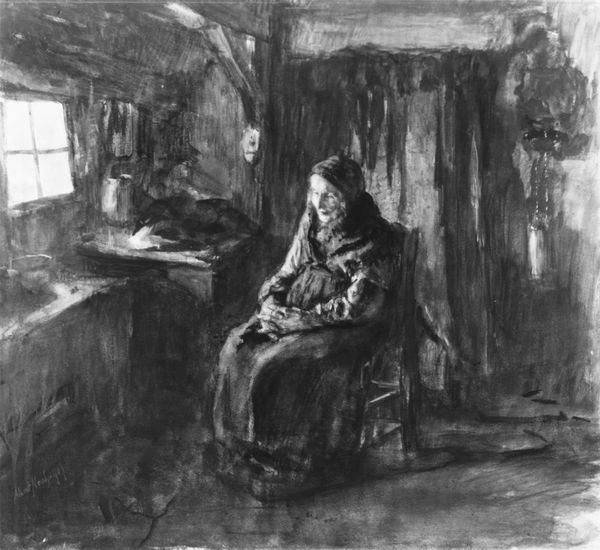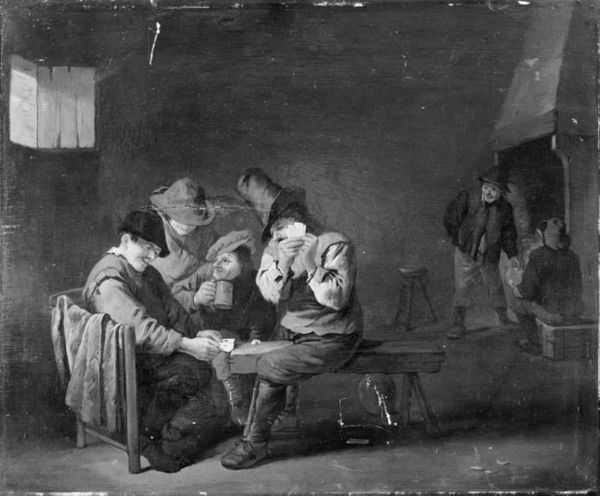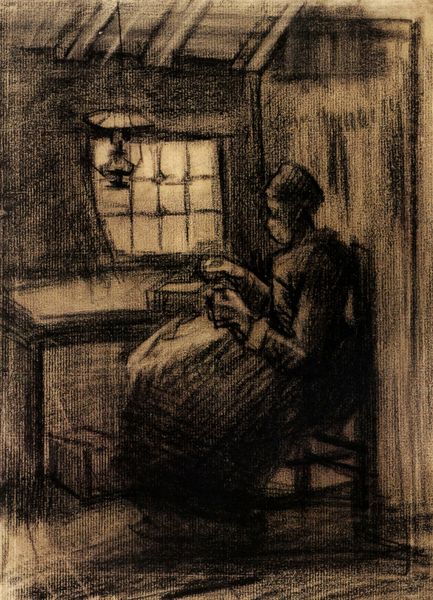
Dimensions: 142 cm (height) x 142.5 cm (width) (Netto)
Curator: I find myself immediately drawn to the textures created with charcoal here; the almost blurred effect imbues the figures with a deep sense of introspection and melancholy. Editor: Yes, there's something very weighty in Sigurd Wandel's "Figurgruppe. To kvinder og et barn," or "Figure Group. Two Women and a Child." It’s estimated to have been made between 1890 and 1905. He used charcoal on paper for this piece, and it currently resides here at the SMK. I see this quiet domestic scene also charged with a questioning of the very social fabric in which it’s composed. Curator: I agree; Wandel really captures a somber mood with that specific material and skillful application, and how the crosshatching makes me feel as if I can trace Wandel's gestures in applying this powdered charcoal to the work. We can think about this drawing as a social document – how the artist perceived women in his immediate domestic and cultural environment. Editor: Indeed, let’s consider the context. It’s turn-of-the-century Denmark, where women were increasingly engaging in reform movements; we see women advocating for changes to labor conditions, voting, or divorce. So, the labor and process by which he recorded the quietness between generations—almost creating this memorializing sensibility around it—begins to stand out. What are your thoughts on their positioning in relation to the room, by contrast? Curator: Yes, how the statues become stand-ins for a collective Danish visual culture. I notice that the backdrop seems littered with symbolic art pieces or even potential portraits that function like the wallpaper—or visual infrastructure—of their domestic sphere, highlighting the constant pressures of a society fixated on specific cultural aesthetics or the patriarchy, and potentially undermining and/or reinforcing these standards. The figures, especially the younger mother, seem contemplative as they’re literally embodying a hopeful, emergent futurity. Editor: Right, Wandel makes sure the labor that goes into making this—all the material history in powdered form on this paper that, for better or worse, becomes a social symbol—is on full display and open for conversation. It’s interesting to imagine how a contemporary Danish viewer might interact with all the signifiers here that index the means of production during a time where cultural debates became more pressing and visible. Curator: Thank you for speaking with me. This exercise really allows me to delve into the art with a contemporary perspective. It opens up discussions of gender roles, societal expectations, and domesticity—the artwork becomes a time capsule ripe for deconstruction. Editor: Agreed, and that makes it easier to imagine this scene as more than just aesthetics; there are real laboring people who might have been sitting with this infant under their care, or sitting for their portrait while the world shifted around them.
Comments
No comments
Be the first to comment and join the conversation on the ultimate creative platform.
